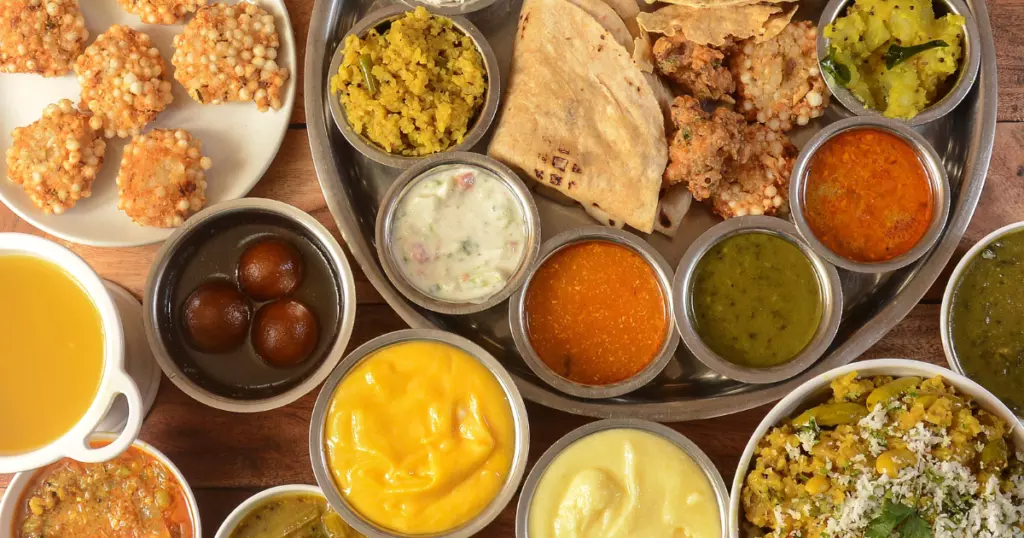
North Indian food: High on salt, low on potassium and protein, reveals new study
PGIMER, Chandigarh and The George Institute for Global Health, India, has flagged the high intake of salt and phosphorus in north-Indian food, which is low on protein and potassium

If you are the kind who loves a good ‘hatta-katta’ north Indian meal, here’s some findings from a research study that provides food for thought.
A recent study on the dietary habits of north Indians by PGIMER, Chandigarh, and The George Institute for Global Health, India, flagged the higher-than-recommended intake of salt and phosphorus in north-Indian food, which worryingly, seems to be low on protein and potassium.
Published in the journal Frontiers in Nutrition in February, this cross-sectional study involved over 400 adult participants encompassing healthy adults and those with early-stage chronic kidney disease (CKD). The test subjects comprised men and women with varying body mass indices, blood pressure and abdominal obesity.
It utilised a more accurate 24-hour urinary excretion analysis to assess nutrient intake than dietary recall by participants, said a synopsis of the study published in The Goerge Institute for Global Health website.
Alarming trends
The analysis revealed “alarming trends” said the study.
It showed excessive salt consumption which were beyond recommended levels, and what’s more, the potassium intake and protein consumption were below the recommended dietary allowance. Men exhibited higher nutrient intake compared to women. Excessive salt consumption and inadequate potassium intake increase the risk of development of hypertension, cardiovascular disease, and chronic kidney disease.
According to Dr Ashok Yadav, associate professor, experimental medicine and biotechnology, PGIMER, Chandigarh, and one of the study’s lead investigators, the WHO guidelines recommend a daily dietary sodium intake of two grams (corresponding to five grams of salt), but 65 per cent consume eight grams daily. While 3.50 grams of potassium intake is recommended by WHO, the participants recorded a low potassium intake.
Protein intake was also very low, found the study.
Protein being a building block of our bodies if not at an optimum level can cause muscle wasting. The low dietary diversity leads to imbalance and unhealthy eating.
Growing NCD cases in India
Dr Yadav said in a statement that a “poor nutritious diet is a major risk element for non-communicable diseases, which are of considerable public health concern."
The study quotes WHO to state that 63 per cent of total deaths reported in 2016 in India were due to NCDs, with 27 per cent attributed to cardiovascular diseases (CVD). Similarly, the number of deaths due to Chronic Kidney Disease (CKD) is rising in India. Unhealthy diets, lack of physical activity and use of alcohol and tobacco are major NCD risk factors
How much sodium and potassium required
The WHO guidelines recommend a daily dietary sodium intake of 2 g (corresponding to 5 g salt) and potassium consumption of at least 3.50 g. In the presence of chronic conditions such as kidney diseases and hypertension, sodium intake should not be more than 1.50 g per day.
Personalised changes
The study also stressed the need for “personalised changes” in diet to reduce the risks of NCDs based on accurate daily dietary assessments. Similarly, the study suggested dietary guidelines that are specific to a local area
Emphasising the urgency for public awareness campaigns, individual counseling, and food policy reforms, Prof. Vivekanand Jha, executive director, The George Institute for Global Health, India, added, “The study shows that it is important to have dietary guidelines that are specific to local area. We need to take action to fix imbalances in nutrients and encourage people to eat more healthily by increasing diversity.”
Researchers suggested using multifaceted strategies, including providing better information on food labels so people can make healthier choices, reducing salt in processed foods, and encouraging people to eat more fruits and vegetables rich in potassium.
The study may have confined itself to assessing protein, sodium, potassium and phosphorus but given their imbalance, it is quite clear that the north-Indian diet is not uneven.
Here's a healthy tip from the study: Foods rich in potassium are nuts, green vegetables and fruits like kiwi and banana.

